-
GLOBAL HYDRATE INHIBITORS MARKET, BY TYPE 26
-
GLOBAL HYDRATE INHIBITORS
-
MARKET, BY APPLICATION 27
-
GLOBAL HYDRATE INHIBITORS MARKET, BY REGION 28
-
MARKET INTRODUCTION 29
-
DEFINITION 29
-
SCOPE OF THE STUDY
-
MARKET
-
STRUCTURE 30
-
RESEARCH METHODOLOGY 31
-
RESEARCH PROCESS 31
-
PRIMARY RESEARCH 32
-
SECONDARY RESEARCH 33
-
MARKET SIZE ESTIMATION 34
-
FORECAST MODEL 35
-
LIST OF ASSUMPTIONS 36
-
MARKET INSIGHTS 37
-
MARKET DYNAMICS 42
-
INTRODUCTION 42
-
DRIVERS 43
- INCREASING DEMAND FOR LOW-DOSAGE HYDRATE INHIBITORS
- ADVANCEMENTS IN THE DRILLING OF GAS HYDRATES 43
- DRIVERS IMPACT ANALYSIS
-
IN THE OIL & GAS INDUSTRY 43
-
RESTRAINTS
- ENVIRONMENTAL
- RESTRAINTS IMPACT ANALYSIS
-
ISSUES ASSOCIATED WITH THE USE OF ANTI-AGGLOMERATE (AA) LDHI 44
-
OPPORTUNITIES
- INCREASING
- RESEARCH &
-
INVESTMENTS IN OIL & GAS EXPLORATION ACTIVITIES IN DEVELOPING ECONOMIES 45
-
DEVELOPMENT OF ECO-FRIENDLY HYDRATE INHIBITORS 46
-
CHALLENGES 47
- REQUIREMENT OF HIGH DOSAGE OF THERMODYNAMIC
-
INHIBITORS 47
-
AVAILABILITY OF DEPRESSURIZATION METHOD FOR CONTROLLING HYDRATE FORMATION 47
-
TRENDS 47
- SHIFT TOWARD RENEWABLE
- ECONOMIC IMPACT ON THE OVERALL INDUSTRY 48
- IMPACT ON PRODUCTION 48
- IMPACT ON HYDRATE
- IMPACT ON PRICING 49
- IMPACT ON WORLD TRADE 49
-
SOURCES OF ENERGY 47
-
COVID 19 IMPACT ANALYSIS 48
-
INHIBITORS INDUSTRY 48
-
IMPACT ON SUPPLY CHAIN 48
-
CASH FLOW CONSTRAINTS 49
-
MARKET FACTOR ANALYSIS 50
-
SUPPLY CHAIN ANALYSIS 50
- RAW MATERIALS SUPPLIERS 51
- DISTRIBUTION CHANNEL 52
- APPLICATIONS 52
-
FOR THERMODYNAMIC INHIBITORS (THIS) 51
-
(LDHIS) 51
-
HYDRATE INHIBITOR PRODUCERS 51
-
PORTER’S FIVE FORCES MODEL 53
- THREAT OF NEW ENTRANTS
- THREAT
- BARGAINING POWER OF BUYERS 54
- INTENSITY OF COMPETITIVE RIVALRY 54
-
OF SUBSTITUTES 54
-
BARGAINING POWER OF SUPPLIERS 54
-
PRICING ANALYSIS
-
– BY REGION (USD/TON), 2021 55
-
GLOBAL MANUFACTURERS MARKET CONCENTRATION RATIO 55
-
GLOBAL HYDRATE INHIBITORS
-
MARKET, BY TYPE 56
-
INTRODUCTION 56
-
THERMODYNAMIC INHIBITORS (THI) 58
-
LOW-DOSAGE HYDRATE INHIBITORS (LDHI) 60
-
GLOBAL HYDRATE INHIBITORS MARKET, BY APPLICATION
-
INTRODUCTION
-
OFFSHORE
-
OPERATIONS 64
-
ONSHORE OPERATIONS 65
-
-
GLOBAL HYDRATE INHIBITORS
-
MARKET, BY REGION 66
-
OVERVIEW 66
-
NORTH AMERICA 70
-
US 74
-
CANADA 78
-
EUROPE 82
-
GERMANY 87
-
UK 91
-
FRANCE 95
-
ITALY 99
-
RUSSIA 103
-
NORWAY 107
-
NETHERLANDS 111
-
POLAND 115
-
DENMARK 119
-
REST OF EUROPE 123
-
ASIA-PACIFIC 127
-
CHINA 132
-
JAPAN 136
-
INDIA 140
-
AUSTRALIA & NEW ZEALAND 144
-
MIDDLE EAST AND AFRICA 185
-
INDONESIA 148
-
SOUTH KOREA 152
-
THAILAND 156
-
REST OF ASIA-PACIFIC 160
-
LATIN AMERICA 164
- BRAZIL 169
- MEXICO 173
- ARGENTINA 177
- REST OF LATIN AMERICA
-
THE
- GCC 190
- NIGERIA 194
- IRAN 198
- IRAQ 202
- EGYPT 206
- REST OF THE MIDDLE EAST AND AFRICA 210
-
COMPETITIVE LANDSCAPE 214
-
COMPETITIVE OVERVIEW 214
-
GLOBAL MARKET STRATEGY ANALYSIS 214
-
COMPETITIVE BENCHMARKING
-
COMPETITION
- COMPANY OVERVIEW 220
- FINANCIAL OVERVIEW 221
- PRODUCT OFFERINGS 221
- KEY DEVELOPMENTS 222
- SWOT ANALYSIS 222
- KEY STRATEGIES 222
-
DASHBOARD 216
-
COMPANY PROFILES 217
-
SCHLUMBERGER 217
-
COMPANY OVERVIEW 217
-
FINANCIAL OVERVIEW 218
-
PRODUCT OFFERINGS 218
-
KEY DEVELOPMENTS 218
-
SWOT ANALYSIS 219
-
KEY STRATEGIES 219
-
BAKER HUGHES, A GE COMPANY LLC 220
-
BASF SE 223
- COMPANY OVERVIEW 223
- FINANCIAL OVERVIEW 224
- PRODUCT OFFERINGS 224
- KEY DEVELOPMENTS 225
- SWOT ANALYSIS 225
- KEY STRATEGIES 225
-
HALLIBURTON 226
- COMPANY OVERVIEW 226
- FINANCIAL OVERVIEW 226
- PRODUCT OFFERINGS 227
- KEY DEVELOPMENTS 227
- SWOT ANALYSIS 227
- KEY STRATEGIES 227
-
-
COMPANY PROFILES 228
-
HUNTSMAN INTERNATIONAL LLC 228
- COMPANY OVERVIEW 228
- FINANCIAL OVERVIEW
- COMPANY OVERVIEW 237
- FINANCIAL OVERVIEW 238
- PRODUCT OFFERINGS 238
- KEY DEVELOPMENTS 239
- SWOT ANALYSIS 239
- KEY STRATEGIES 239
-
PRODUCT OFFERINGS 229
-
KEY DEVELOPMENTS 230
-
SWOT ANALYSIS 230
-
KEY STRATEGIES 230
-
ASHLAND 231
-
COMPANY OVERVIEW 231
-
FINANCIAL OVERVIEW 232
-
PRODUCT OFFERINGS 232
-
KEY DEVELOPMENTS 233
-
SWOT ANALYSIS 233
-
KEY STRATEGIES 233
-
ARKEMA 234
-
COMPANY OVERVIEW 234
-
FINANCIAL OVERVIEW 235
-
PRODUCT OFFERINGS 235
-
KEY DEVELOPMENTS 236
-
SWOT ANALYSIS 236
-
KEY STRATEGIES 236
-
EVONIK INDUSTRIES AG 237
-
HUNTSMAN INTERNATIONAL LLC 240
- COMPANY OVERVIEW 240
- FINANCIAL OVERVIEW
-
PRODUCT OFFERINGS 241
-
KEY DEVELOPMENTS 242
-
SWOT ANALYSIS 242
-
KEY STRATEGIES 242
-
-
ASHLAND 243
- COMPANY OVERVIEW
- COMPANY OVERVIEW 249
- FINANCIAL OVERVIEW 250
- PRODUCT OFFERINGS 250
- KEY DEVELOPMENTS 251
- SWOT ANALYSIS 251
- KEY STRATEGIES 251
-
FINANCIAL OVERVIEW 244
-
PRODUCT OFFERINGS 244
-
KEY DEVELOPMENTS 245
-
SWOT ANALYSIS 245
-
KEY STRATEGIES 245
-
ARKEMA 246
-
COMPANY OVERVIEW 246
-
FINANCIAL OVERVIEW 247
-
PRODUCT OFFERINGS 247
-
KEY DEVELOPMENTS 248
-
SWOT ANALYSIS 248
-
KEY STRATEGIES 248
-
EVONIK INDUSTRIES AG 249
-
ECOLAB 252
- COMPANY OVERVIEW 252
- FINANCIAL OVERVIEW 253
- PRODUCTS OFFERED 253
- KEY DEVELOPMENTS 254
- SWOT ANALYSIS 254
- KEY STRATEGIES 254
-
FINORIC LLC 255
- COMPANY OVERVIEW 255
- FINANCIAL OVERVIEW 255
- PRODUCTS OFFERED 255
- KEY DEVELOPMENTS
-
SWOT ANALYSIS 256
-
KEY STRATEGIES 256
-
-
OMNI INDUSTRIAL
- COMPANY OVERVIEW 259
- FINANCIAL OVERVIEW 260
- PRODUCTS OFFERED 260
- KEY DEVELOPMENTS
-
SOLUTIONS 257
-
COMPANY OVERVIEW 257
-
FINANCIAL OVERVIEW 257
-
PRODUCTS OFFERED 257
-
KEY DEVELOPMENTS 257
-
SWOT ANALYSIS 258
-
KEY STRATEGIES 258
-
TETRA TECHNOLOGIES, INC. 259
-
SWOT ANALYSIS 261
-
KEY STRATEGIES 261
-
APPENDIX 262
-
REFERENCES 262
-
RELATED REPORTS 263
-
-
LIST OF TABLES
-
LIST OF ASSUMPTIONS
-
TABLE 2
-
MANUFACTURERS MARKET CONCENTRATION RATIO, BY REGION 55
-
GLOBAL HYDRATE INHIBITORS, BY TYPE, 2019–2030
-
(USD THOUSAND) 56
-
TABLE
-
GLOBAL HYDRATE INHIBITORS MARKET, BY TYPE, 2019–2030 (TONS) 57
-
GLOBAL HYDRATE
-
INHIBITORS MARKET FOR THERMODYNAMIC INHIBITORS (THI), BY TYPE, 2019–2030 (USD
-
THOUSAND) 58
-
TABLE
-
GLOBAL HYDRATE INHIBITORS MARKET FOR THERMODYNAMIC INHIBITORS (THI), BY TYPE,
-
GLOBAL HYDRATE INHIBITORS MARKET FOR THERMODYNAMIC INHIBITORS
-
(THI), BY REGION, 2019–2030
-
(USD THOUSAND) 59
-
GLOBAL HYDRATE INHIBITORS MARKET FOR THERMODYNAMIC
-
INHIBITORS (THI), BY REGION, 2019–2030 (TONS) 59
-
GLOBAL HYDRATE INHIBITORS MARKET FOR LOW-DOSAGE
-
HYDRATE INHIBITORS (LDHI), BY TYPE, 2019–2030
-
(USD THOUSAND) 60
-
GLOBAL HYDRATE INHIBITORS MARKET FOR LOW-DOSAGE
-
HYDRATE INHIBITORS (LDHI), BY TYPE, 2019–2030 (TONS) 60
-
GLOBAL HYDRATE INHIBITORS
-
MARKET FOR LOW-DOSAGE HYDRATE INHIBITORS (LDHI), BY REGION, 2019–2030
-
(USD THOUSAND) 61
-
GLOBAL HYDRATE
-
INHIBITORS MARKET FOR LOW-DOSAGE HYDRATE INHIBITORS (LDHI), BY REGION, 2019–2030
-
(TONS) 61
-
TABLE
-
GLOBAL HYDRATE INHIBITORS, BY APPLICATION, 2019–2030 (USD THOUSAND) 62
-
GLOBAL HYDRATE
-
INHIBITORS MARKET, BY APPLICATION, 2019–2030 (TONS) 63
-
GLOBAL HYDRATE INHIBITORS MARKET FOR OFFSHORE
-
OPERATIONS, BY REGION, 2019–2030 (USD THOUSAND) 64
-
GLOBAL HYDRATE INHIBITORS MARKET FOR OFFSHORE
-
OPERATIONS, BY REGION, 2019–2030 (TONS) 64
-
GLOBAL HYDRATE INHIBITORS MARKET FOR ONSHORE
-
OPERATIONS, BY REGION, 2019–2030 (USD THOUSAND) 65
-
GLOBAL HYDRATE INHIBITORS MARKET FOR ONSHORE
-
OPERATIONS, BY REGION, 2019–2030 (TONS) 65
-
GLOBAL HYDRATE INHIBITORS MARKET, BY REGION,
-
GLOBAL HYDRATE INHIBITORS MARKET, BY REGION, 2022-2030(TONS)
-
TABLE 21
-
GLOBAL HYDRATE INHIBITORS MARKET, BY TYPE, 2022-2030(USD THOUSAND) 69
-
GLOBAL HYDRATE
-
INHIBITORS MARKET, BY TYPE, 2022-2030(TONS) 69
-
GLOBAL HYDRATE INHIBITORS MARKET, BY APPLICATION,
-
GLOBAL HYDRATE INHIBITORS MARKET, BY APPLICATION, 2022-2030(TONS)
-
TABLE 25
-
NORTH AMERICA HYDRATE INHIBITORS MARKET, BY COUNTRY, 2019–2030 (USD THOUSAND)
-
TABLE 26
-
NORTH AMERICA HYDRATE INHIBITORS MARKET, BY COUNTRY, 2019–2030 (TONS) 70
-
NORTH AMERICA
-
HYDRATE INHIBITORS MARKET, BY TYPE, 2019–2030 (USD THOUSAND) 70
-
NORTH AMERICA
-
HYDRATE INHIBITORS MARKET, BY TYPE, 2019–2030 (TONS) 70
-
NORTH AMERICA HYDRATE
-
INHIBITORS MARKET FOR THERMODYNAMIC INHIBITORS (THI), BY TYPE, 2019–2030
-
(USD THOUSAND) 71
-
NORTH AMERICA
-
HYDRATE INHIBITORS MARKET FOR THERMODYNAMIC INHIBITORS (THI), BY TYPE, 2019–2030
-
(TONS) 71
-
TABLE
-
NORTH AMERICA HYDRATE INHIBITORS MARKET FOR LOW-DOSAGE HYDRATE INHIBITORS (LDHI),
-
BY TYPE, 2019–2030
-
(USD THOUSAND) 72
-
NORTH AMERICA HYDRATE INHIBITORS MARKET FOR LOW-DOSAGE HYDRATE
-
INHIBITORS (LDHI), BY TYPE, 2019–2030
-
(TONS) 72
-
NORTH AMERICA HYDRATE INHIBITORS MARKET, BY APPLICATION,
-
NORTH AMERICA HYDRATE INHIBITORS MARKET, BY APPLICATION, 2019–2030
-
(TONS) 73
-
TABLE
-
US HYDRATE INHIBITORS MARKET, BY TYPE, 2019–2030 (USD THOUSAND) 74
-
US HYDRATE INHIBITORS
-
MARKET, BY TYPE, 2019–2030 (TONS) 74
-
US HYDRATE INHIBITORS MARKET FOR THERMODYNAMIC
-
INHIBITORS (THI), BY TYPE, 2019–2030 (USD THOUSAND) 75
-
US HYDRATE INHIBITORS MARKET FOR THERMODYNAMIC
-
INHIBITORS (THI), BY TYPE, 2019–2030 (TONS) 75
-
US HYDRATE INHIBITORS MARKET FOR LOW-DOSAGE
-
HYDRATE INHIBITORS (LDHI), BY TYPE, 2019–2030
-
(USD THOUSAND) 76
-
US HYDRATE INHIBITORS MARKET FOR LOW-DOSAGE
-
HYDRATE INHIBITORS (LDHI), BY TYPE, 2019–2030 (TONS) 76
-
US HYDRATE INHIBITORS
-
MARKET, BY APPLICATION, 2019–2030 (USD THOUSAND) 77
-
US HYDRATE INHIBITORS MARKET, BY APPLICATION,
-
CANADA HYDRATE INHIBITORS MARKET, BY TYPE, 2019–2030
-
(USD THOUSAND) 78
-
TABLE
-
CANADA HYDRATE INHIBITORS MARKET, BY TYPE, 2019–2030 (TONS) 78
-
CANADA HYDRATE
-
INHIBITORS MARKET FOR THERMODYNAMIC INHIBITORS (THI), BY TYPE, 2019–2030 (USD
-
THOUSAND) 79
-
TABLE
-
CANADA HYDRATE INHIBITORS MARKET FOR THERMODYNAMIC INHIBITORS (THI), BY TYPE,
-
CANADA HYDRATE INHIBITORS MARKET FOR LOW-DOSAGE HYDRATE INHIBITORS
-
(LDHI), BY TYPE, 2019–2030
-
(USD THOUSAND) 80
-
CANADA HYDRATE INHIBITORS MARKET FOR LOW-DOSAGE HYDRATE INHIBITORS
-
(LDHI), BY TYPE, 2019–2030 (TONS) 80
-
CANADA HYDRATE INHIBITORS MARKET, BY APPLICATION,
-
CANADA HYDRATE INHIBITORS MARKET, BY APPLICATION, 2019–2030
-
(TONS) 81
-
TABLE
-
EUROPE HYDRATE INHIBITORS MARKET, BY COUNTRY, 2019–2030 (USD THOUSAND)
-
TABLE 52
-
EUROPE HYDRATE INHIBITORS MARKET, BY COUNTRY, 2019–2030 (TONS) 82
-
EUROPE HYDRATE
-
INHIBITORS MARKET, BY TYPE, 2019–2030 (USD THOUSAND) 83
-
EUROPE HYDRATE INHIBITORS
-
MARKET, BY TYPE, 2019–2030 (TONS) 83
-
EUROPE HYDRATE INHIBITORS MARKET FOR THERMODYNAMIC
-
INHIBITORS (THI), BY TYPE, 2019–2030 (USD THOUSAND) 84
-
-
style="font-family: arial, helvetic

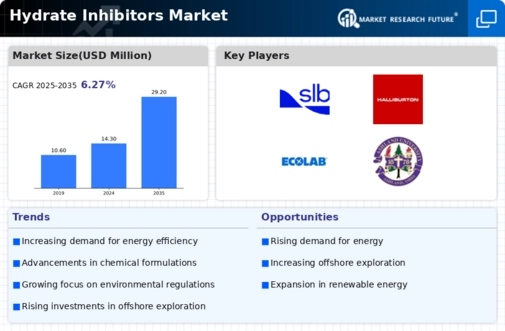
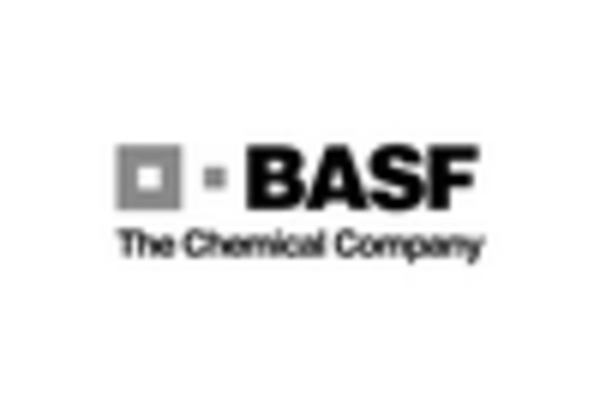

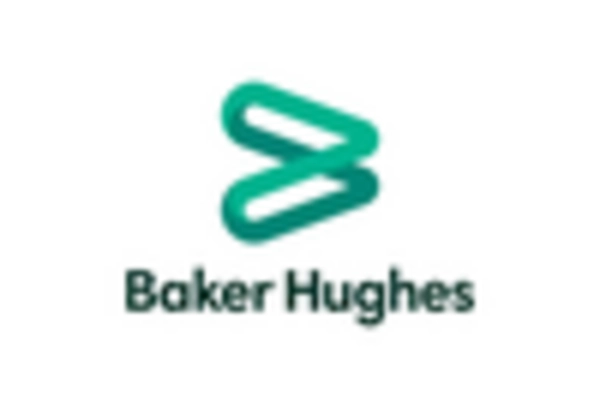
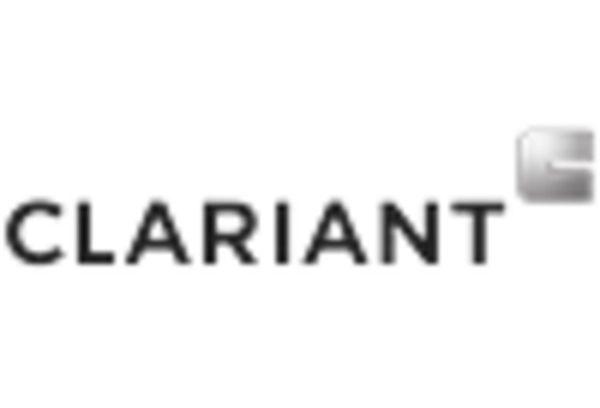
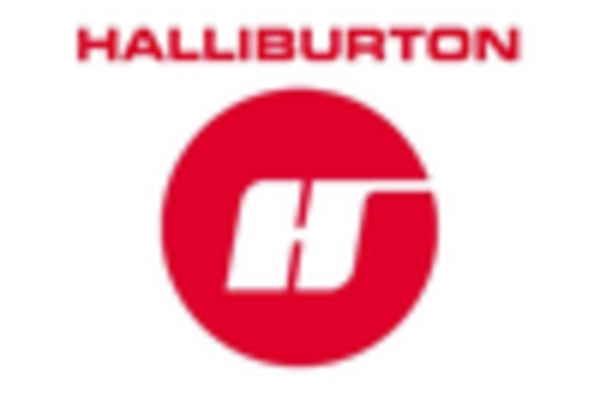
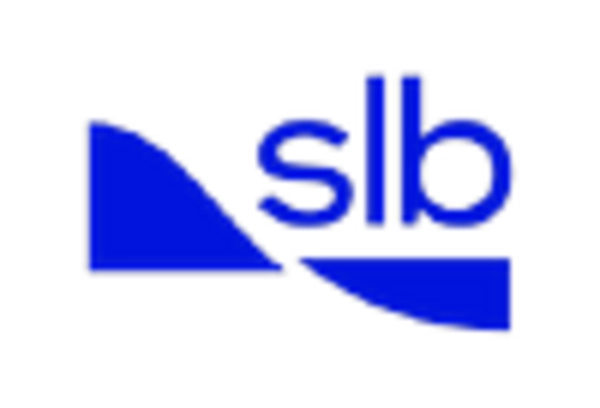









Leave a Comment